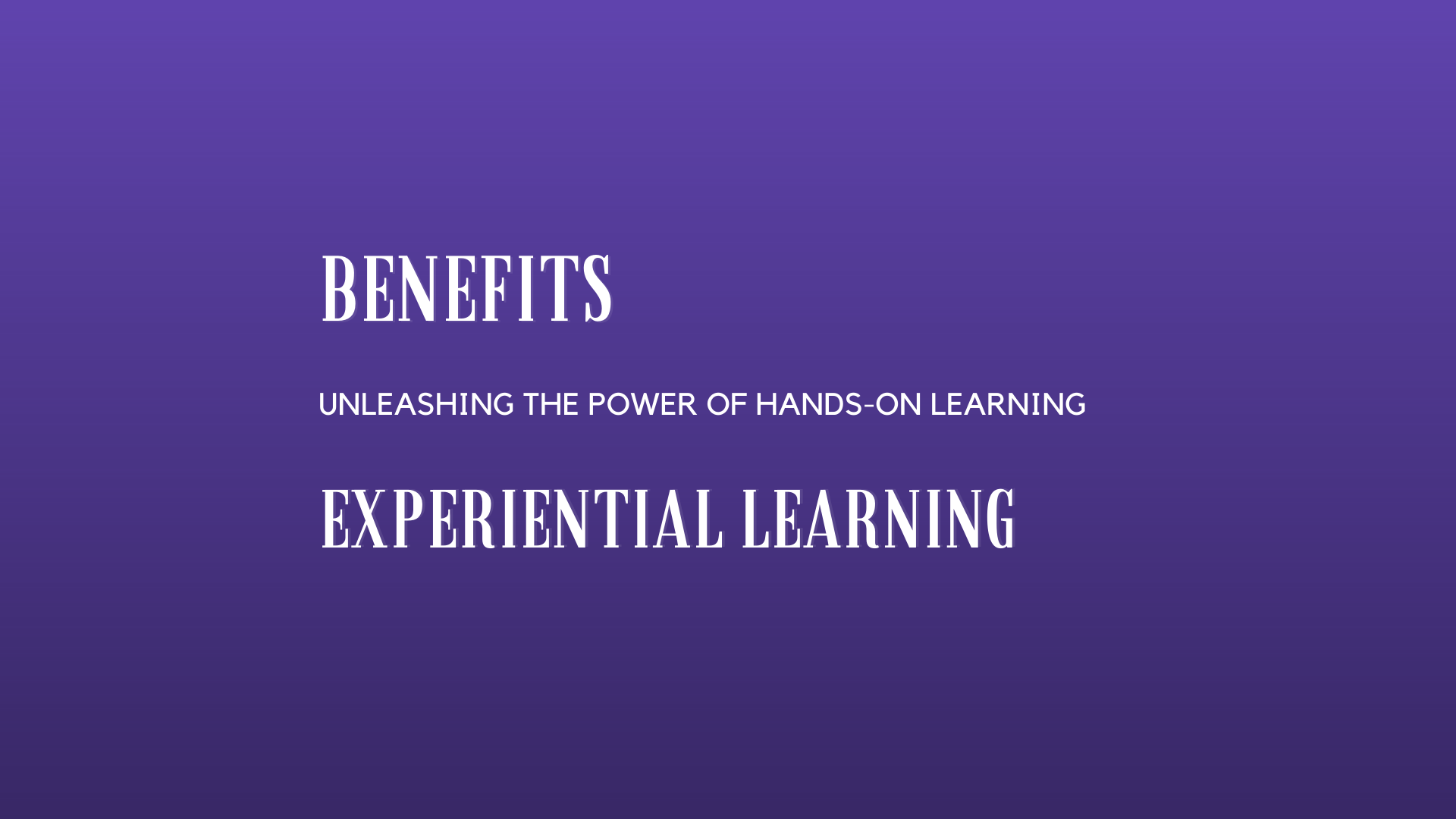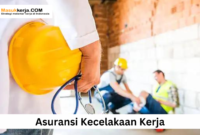Discover the numerous benefits of experiential learning in the classroom and why it is becoming an increasingly popular method of education.
Education has long been viewed as a key tool for personal and professional growth, and in recent years, there has been a shift away from traditional lecture-style teaching methods towards more hands-on, experiential learning methods.
The Benefits of Experiential Learning in the Classroom
“The Benefits of Experiential Learning in the Classroom” are numerous and well documented, and as a result, this approach to education is becoming increasingly popular. Experiential learning is a highly engaging and interactive form of education that involves students in real-life situations and activities, helping them to better understand and retain the material being taught.
By participating in hands-on projects, field trips, and simulations, students are able to develop critical thinking, problem-solving, and real-world skills that are essential for success in their future careers. This article will explore the many benefits of experiential learning in the classroom and why this approach to education is becoming a staple in many educational settings.
Education has come a long way since the traditional lecture-style classrooms of the past. With advancements in technology and changes in society, the way we approach learning is also changing. Experiential learning, a hands-on, active approach to learning, is becoming a popular method in the classroom, and for good reason. By engaging students in real-life situations and activities, experiential learning provides a wealth of benefits that traditional teaching methods simply cannot match.
You Should To Know the other article in our Official Google News.
1. Enhances Critical Thinking and Problem-Solving Skills
One of the most significant benefits of experiential learning in the classroom is the way in which it enhances critical thinking and problem-solving skills. By placing students in real-life scenarios and challenging them to find solutions to complex problems, this type of learning provides a platform for students to develop their problem-solving abilities.
Unlike traditional lecture-style teaching methods, experiential learning encourages students to think creatively and to approach problems from multiple perspectives, helping them to gain a deeper understanding of the material. This type of learning is particularly beneficial for students who struggle with abstract concepts, as it provides a concrete, hands-on context for the material being taught.
Furthermore, experiential learning also helps students to develop their critical thinking skills. By participating in hands-on projects and simulations, students are able to analyze, evaluate, and synthesize information, and to apply their knowledge in practical ways.
This type of learning helps students to better understand the material being taught, and to develop their ability to think critically and make informed decisions. In addition, critical thinking skills are essential for success in both personal and professional life, and by participating in experiential learning in the classroom, students are able to develop these skills from a young age.
In conclusion, “The Benefits of Experiential Learning in the Classroom” when it comes to enhancing critical thinking and problem-solving skills are clear.
By placing students in real-life situations and challenging them to find solutions to complex problems, this type of learning provides a platform for students to develop their problem-solving abilities and to think critically about the material being taught. These skills will serve students well throughout their academic and professional careers, and are an essential aspect of a well-rounded education.
2. Promotes Active Engagement and Collaboration
Experiential learning in the classroom not only enhances critical thinking and problem-solving skills, but it also promotes active engagement and collaboration among students. By participating in hands-on activities and projects, students are able to work together towards a common goal, which helps to foster a sense of community and cooperation.
In addition, students are able to share their unique perspectives and ideas, which promotes creativity and the exchange of knowledge. This type of active engagement helps students to better understand the material being taught, and to develop their interpersonal skills.
Furthermore, experiential learning also helps students to develop their communication skills, as they are able to articulate their ideas and thoughts to their classmates. This type of learning also helps students to build their confidence, as they are able to take an active role in their own education and to contribute to the classroom experience.
By participating in hands-on projects, students are able to see the immediate impact of their work, which helps to motivate and inspire them to do their best.
In conclusion, “The Benefits of Experiential Learning in the Classroom” when it comes to promoting active engagement and collaboration are clear. By participating in hands-on activities and projects, students are able to work together towards a common goal, which helps to foster a sense of community and cooperation.
In addition, students are able to share their unique perspectives and ideas, and to develop their communication and interpersonal skills. These are essential aspects of a well-rounded education and will serve students well throughout their academic and professional careers.
3. Increases Student Retention and Understanding
Experiential learning in the classroom is not only engaging and interactive, but it also has a significant impact on student retention and understanding. This type of learning provides a concrete context for the material being taught, which helps students to better understand and retain the information.
Furthermore, by participating in hands-on activities and projects, students are able to connect the material to their own experiences and to see the relevance of what they are learning. This type of learning is particularly beneficial for students who struggle with abstract concepts, as it provides a tangible and memorable context for the material.
In addition, experiential learning also helps students to develop their memory skills, as they are able to actively engage with the material in meaningful ways. This type of learning encourages students to retain information for longer periods of time, and to recall information more easily when needed.
In contrast, traditional lecture-style teaching methods often rely on rote memorization, which can be less effective in terms of retention and understanding.
In conclusion, “The Benefits of Experiential Learning in the Classroom” when it comes to increasing student retention and understanding are clear. By providing a concrete and relevant context for the material being taught, experiential learning helps students to better understand and retain the information.
In addition, this type of learning helps students to develop their memory skills and to retain information for longer periods of time. These are essential aspects of a well-rounded education and will serve students well throughout their academic and professional careers.
4. Develops Real-World Skills and Prepares Students for the Future
Experiential learning in the classroom is not only engaging and interactive, but it also helps students to develop real-world skills that are essential for success in their future careers. By participating in hands-on activities and projects, students are able to gain practical experience in their chosen field, which helps to prepare them for the future.
This type of learning is particularly beneficial for students who are interested in pursuing careers in STEM (science, technology, engineering, and mathematics) fields, as it provides hands-on experience with the tools and techniques used in these industries.
Furthermore, experiential learning also helps students to develop their critical thinking, problem-solving, and communication skills, which are essential for success in any career. By participating in hands-on projects, students are able to put their knowledge and skills into practice, which helps to develop their confidence and to prepare them for the challenges of the workplace.
In addition, experiential learning also helps students to develop their creativity and innovation skills, as they are able to experiment with new ideas and to explore new approaches to problem-solving. This type of learning encourages students to think outside of the box and to approach challenges from new perspectives. This is particularly important in today’s rapidly changing job market, where adaptability and innovation are essential skills for success.
In conclusion, “The Benefits of Experiential Learning in the Classroom” when it comes to developing real-world skills and preparing students for the future are clear. By participating in hands-on activities and projects, students are able to gain practical experience, develop essential skills, and prepare themselves for the challenges of the workplace. These are critical components of a well-rounded education and will serve students well throughout their academic and professional careers.
5. Enhances Critical Thinking and Problem-Solving Skills
Experiential learning requires students to actively engage with the material and think critically about the task at hand. By being placed in real-life situations, students are challenged to think creatively and problem-solve in a way that mimics the real world. This type of learning helps students develop critical thinking and problem-solving skills that they can apply in their future careers and personal lives.
6. Promotes Active Engagement and Collaboration
Experiential learningis a highly interactive and engaging method of education. By participating in hands-on activities and projects, students are more likely to be invested in the learning process and to remember the information they have learned. In addition, this type of learning often requires collaboration, which helps students develop teamwork and communication skills that are essential in the workforce.
7. Increases Student Retention and Understanding
Experiential learning helps students to better understand and retain information. By experiencing the material firsthand, students are able to connect the concepts to real-life situations, making the information more meaningful and memorable. In addition, this type of learning is often more enjoyable, which can lead to greater motivation and a desire to learn more.
8. Develops Real-World Skills and Prepares Students for the Future
Experiential learning provides students with the opportunity to practice real-world skills and gain practical experience in a controlled environment. By participating in hands-on activities, students can develop the skills they need to succeed in the workplace, such as leadership, problem-solving, and communication. This type of learning helps students to better prepare for their future careers, making them more competitive in the job market.
FAQs:
Q: What is experiential learning?
A: Experiential learning is a hands-on, active approach to learning that involves students engaging in real-life situations and activities.
Q: How does experiential learning differ from traditional teaching methods?
A: Experiential learning is different from traditional teaching methods in that it is a more interactive and engaging approach to learning. Instead of simply listening to lectures or reading textbooks, students participate in hands-on activities and projects that help them better understand and retain the information.
Q: What are some of the benefits of experiential learning in the classroom?
A: Some of the benefits of experiential learning in the classroom include enhanced critical thinking and problem-solving skills, increased student engagement and collaboration, increased student retention and understanding, and the development of real-world skills and preparation for the future.

Conclusion
Experiential learning is a powerful and effective approach to education that offers a wealth of benefits for students. By engaging students in real-life situations and hands-on activities, this type of learning helps to enhance critical thinking and problem-solving skills, promote active engagement and collaboration, increase student retention and understanding, and develop real-world skills that prepare students for their future careers.
As education continues to evolve, experiential learning is becoming an increasingly popular method in the classroom and is proving to be a valuable tool for fostering student growth and success. Whether in the form of field trips, service projects, or hands-on simulations, “The Benefits of Experiential Learning in the Classroom” are undeniable, and it is an approach to education that all students should have the opportunity to experience.



